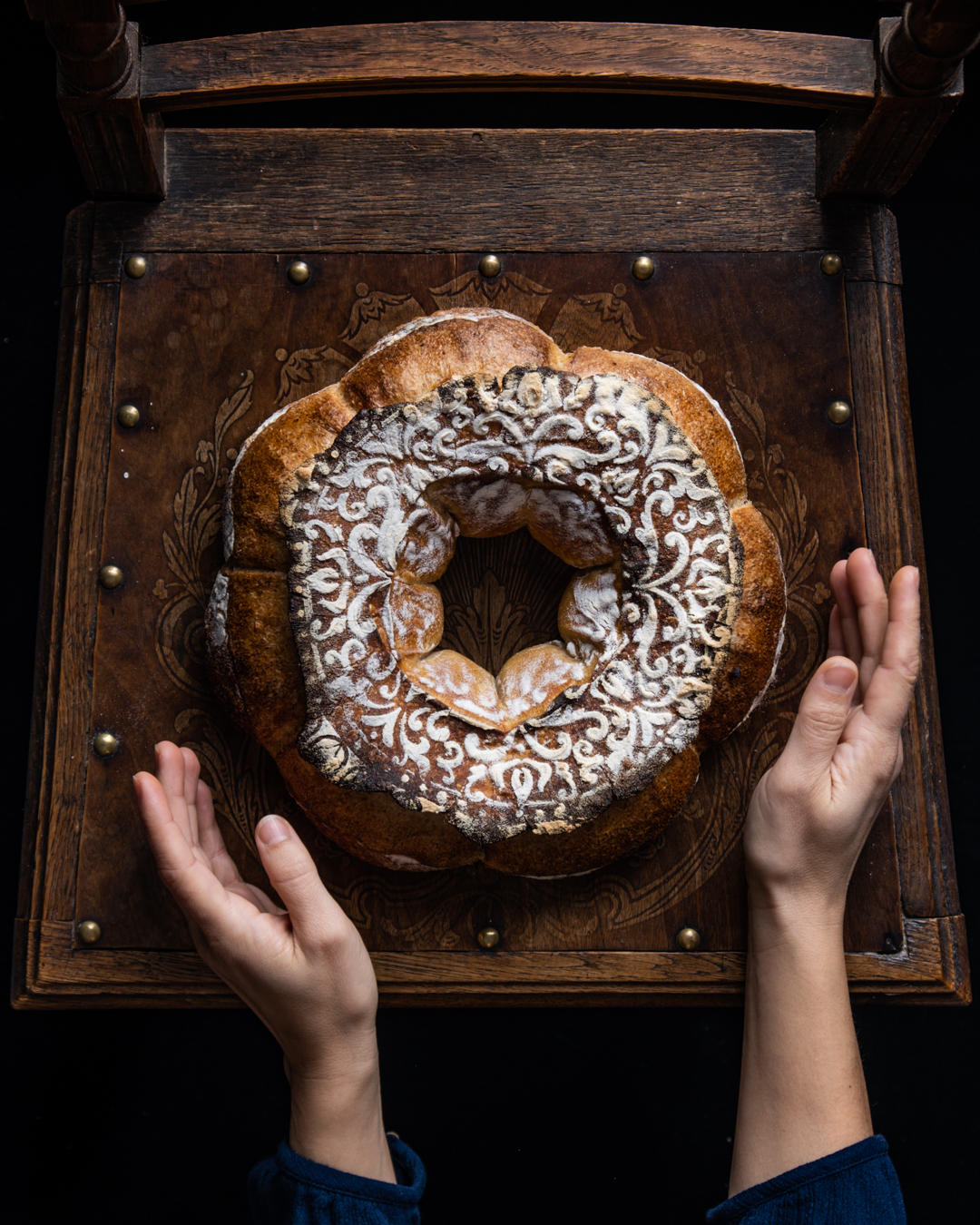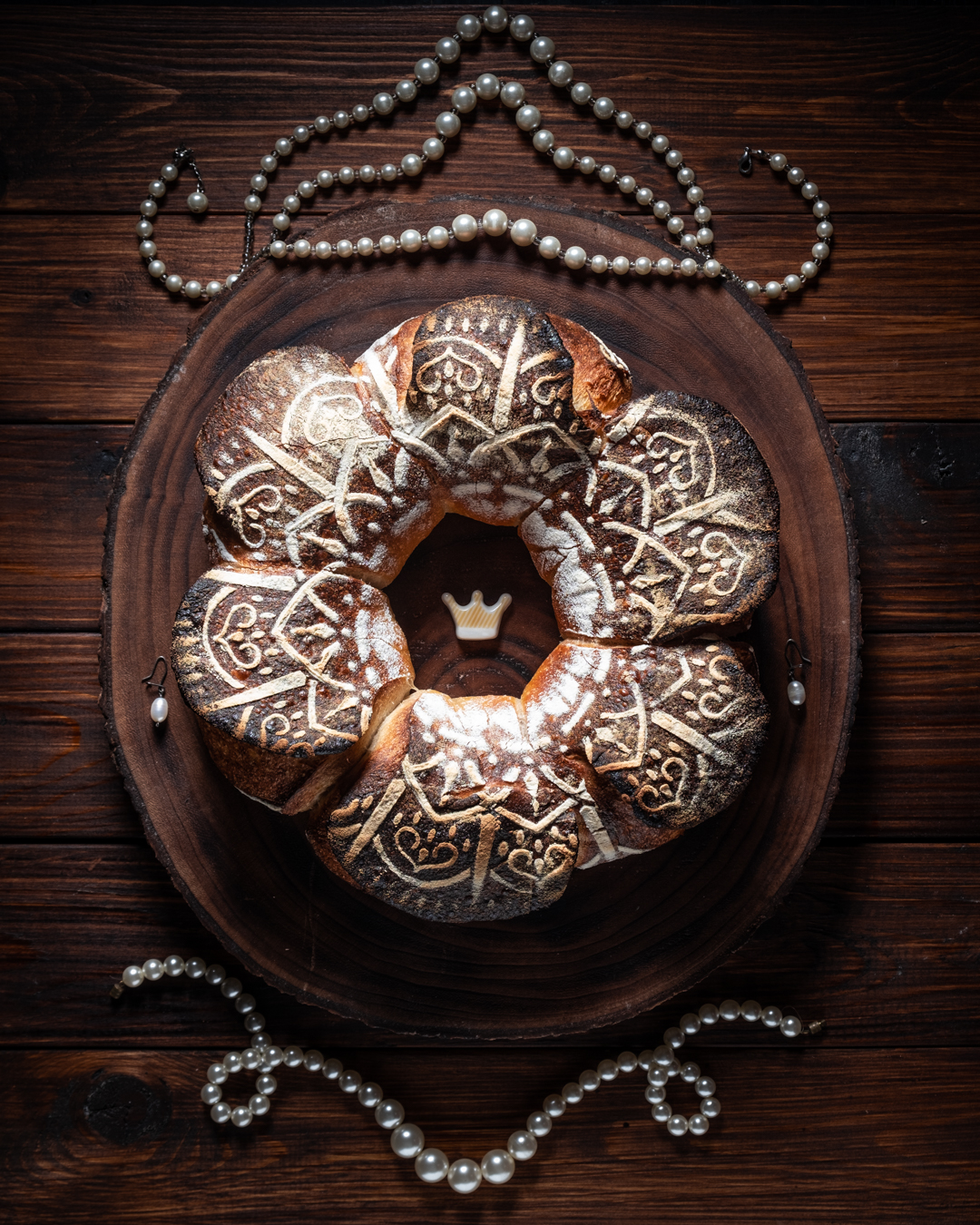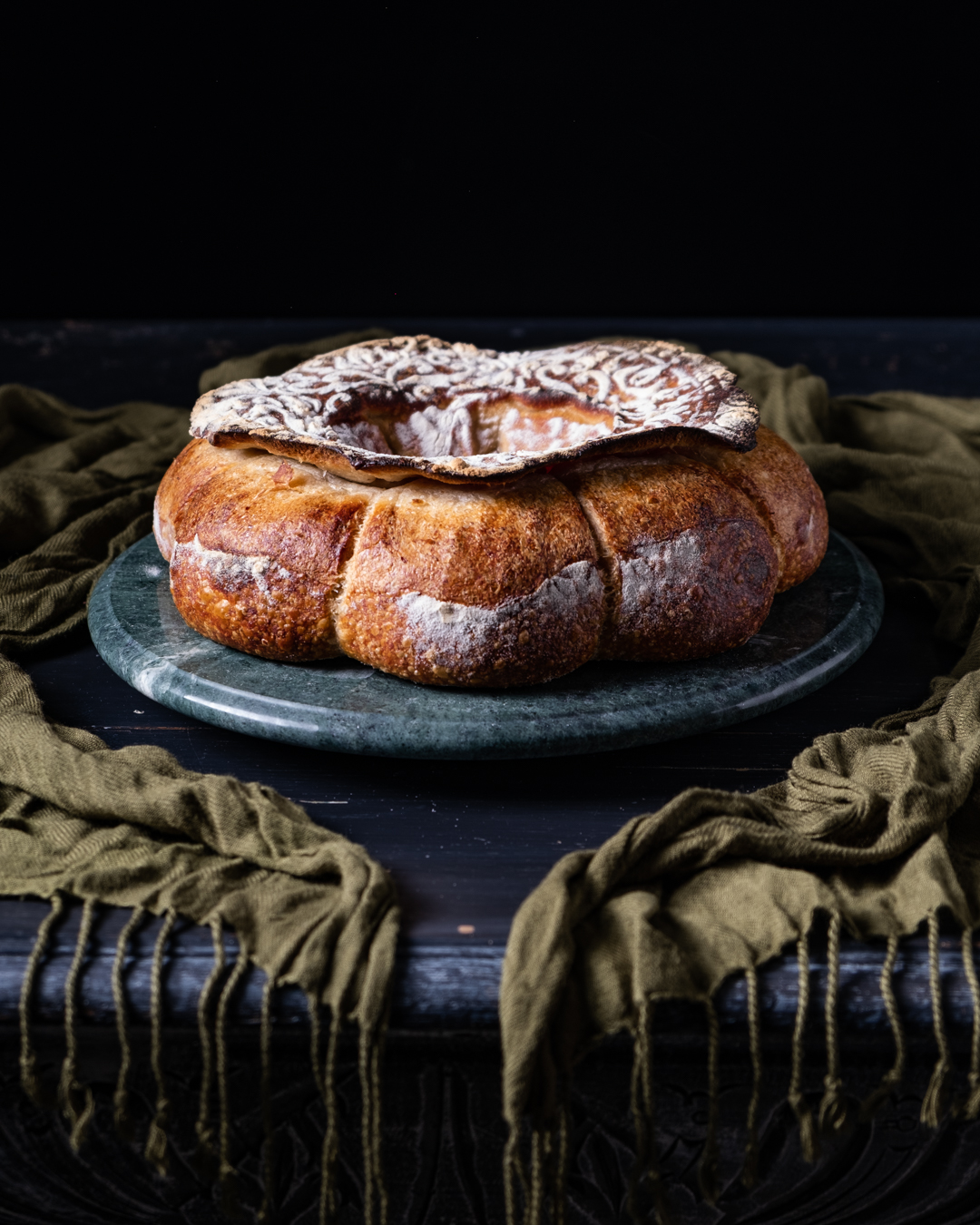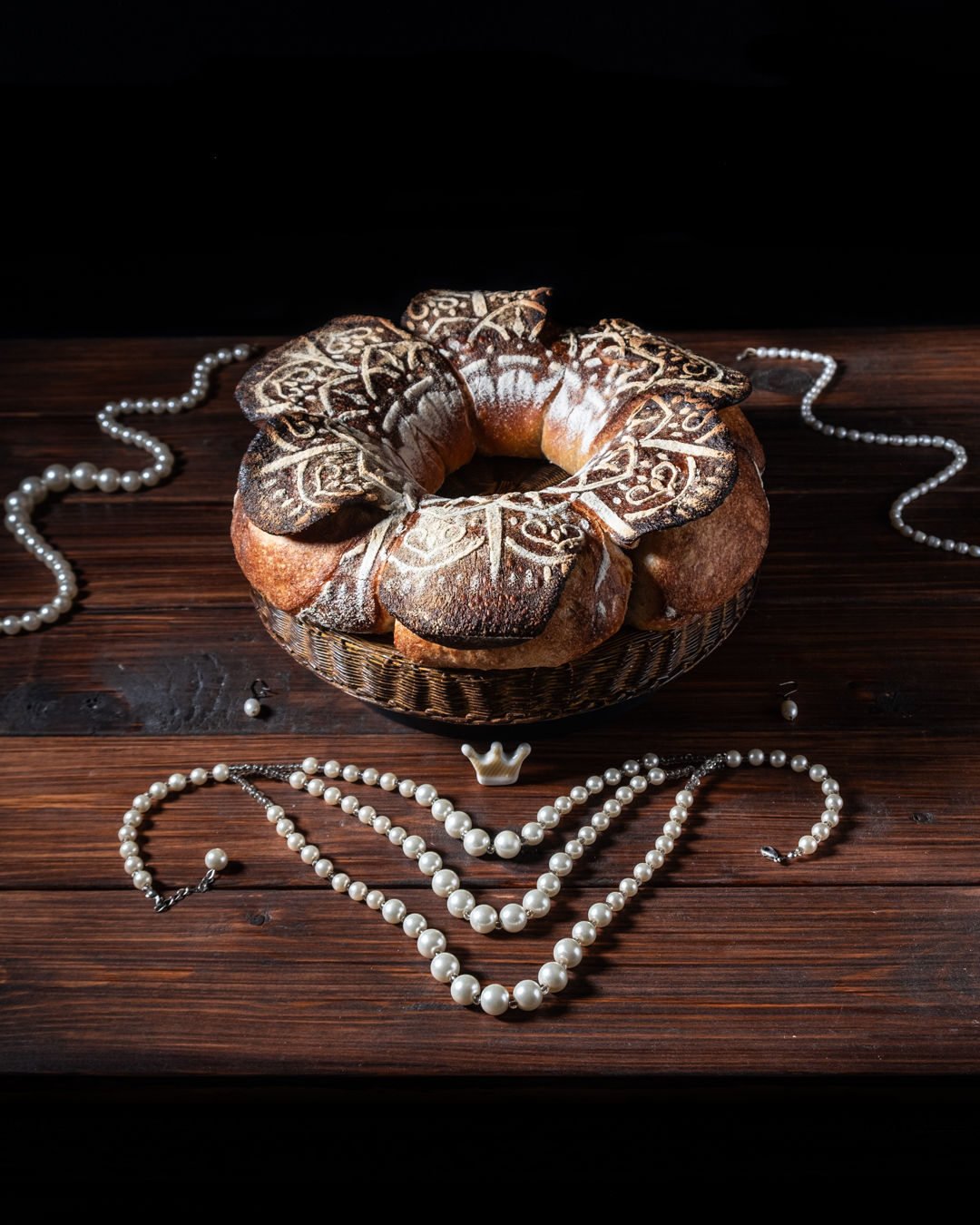

I recently tried 2 French traditional loaves in the shape of the crown:
1. La Couronne Bordelaise | Bordeaux Crown Sourdough Bread (photo on the left)
2. La Couronne Lyonnaise / The Lyon Crown Sourdough Bread (photo on the right)
Two different French towns, similar look but different shaping techniques.
Both of them are made of white flour with a bit of rye (sometimes whole wheat).
Both of them have low hydration (60-65%) and there is a reason for that: to keep their shape during the second fermentation that is done at room temperature.
Both of them are shaped with small dough balls. Nowadays, the size of these balls is 100-150g each, for commercial reasons, but once, they were bigger and the bread was larger. I did a bigger version for my family as I had no intention to bake small to be sellable.
Both of them are proofed in a special banneton that has a bump in the middle. I was looking to buy one but they were way over a decent budget to pay for them, so I went crafty and improvised the bump myself with a small glass or little bowl wrapped in a linen towel and placed in the middle. Of course, not the perfect solution but it worked.
The method for these loaves is simple: autolyse, rest, sourdough, rest, salt, rest, 2 stretch and folds followed by resting time, shape and then second fermentation at room temperature. It must be straight bread (no retard in the fridge) as the balls need to keep their shape.


The shaping is different though:
- the dough of Bordeaux's version is traditionally split into 7: 6 of the same size and the 7th just a bit larger. I saw recipes indicating sometimes 8 to 9 balls, but after more in-depth research I found that traditionally the number is 7. The big ball is stretched like a pizza/with a rolling pin in a flat disk and placed in the banneton over the bump. Then, a layer of oil is brushed on the borders of this disk. The oil is the trick to have this disk detaching during baking to create a collar look to the bread. Then, the other balls are placed concentrically over the flap in the basket. The last stage of the shaping is to cut the flap from the banneton bump and stretch it over the balls. A bit of water can help the dough to stick. This is the bottom of the bread so, how they are cut is of less importance.
- the dough of Lyon's version is split into 6. Each dough ball is then rolled and 1/3 of it is stretched with a rolling pin to create a flap. This is a mini tabatière shape (another French shape). The flap is also brushed on the borders with oil and the ball is rolled over the flap and placed in the banneton with the opening on the side. If the flap is closer to the sides, they will open as petals during baking but if they are placed more under the balls, they will rise more like a laced collar. Both options are fine, I would say it is a matter of preference.
There is no scoring and applying flour through a stencil is optional. I did it and I find it gives a more royal look with it. Otherwise, just a dust of flour will work also.
During baking, the disk/flaps are rising and they burn quicker than the rest of the loaf. This creates a darker border and adds a nice visual effect.
The Lyon crown has also a rustic version that does not involve any balls: the entire dough is shaped in a boule and with the help of the elbow, a hole in the middle is created and placed in the basket with the bump or simply proofed on the board.
The timelapse of these loaves in the oven is outstanding as it looks like a blooming flower. Unfortunately, you cannot see this in real-time, you need to film it and speed up the video to get the effect.
The bread itself has a crunchy crust and a soft crumb, usually dense and this is how it is supposed to be.
The taste is probably under the taste of an overnight retarded bread but this is normal for straight bread. However, the point of these loaves is the look and I bet you'll impress your guest at dinner with such a loaf.
Ingredients for the Bordeaux version: 622g bread flour, 60g whole wheat flour, 419g water, 137g sourdough starter, (100% hydration), 12g salt
Ingredients for Lyon's version: 584g bread flour, 65g rye flour, 398g water, 140g sourdough starter (100% hydration), 13g salt
I did the videos of the 2 recipes with details and they can be watched here:
Thanks for posting. Your photography and baking skills are always impressive.
First class videos!
Danny
Oh, thank you! Very much appreciated your feedback, Danny!
Despite my beliefs, I think these beautiful bread shapes of traditional French loaves are not so known. It should be that kind of bread that you need to try at least once in your life.
Thank you!
Denisa
So stunning Denisa, beautiful.
Benny
A big thank you, Benny! As stated before, I am a fan of your loaves too!
Incredibly beautiful. And the lore is fascinating, thank you for providing this.
Paul, the pleasure is mine! I love to experiment and then give back my lessons learned to the community!